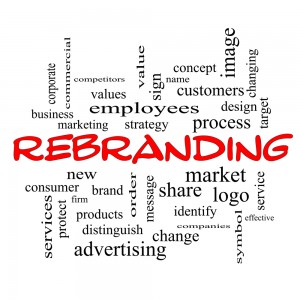Is it time to rebrand your business?
Posted On 20/1/2025 In today’s image-conscious society, everything is judged first by how it looks. Rebranding has become the «cure du jour» for everything from sluggish sales to increased competition and outdated products. So how well do these makeovers work?
In today’s image-conscious society, everything is judged first by how it looks. Rebranding has become the «cure du jour» for everything from sluggish sales to increased competition and outdated products. So how well do these makeovers work?
It depends. There are times when rebranding is crucial, and times when it’s nothing short of perilous. Remember, branding should be a reflection of your company, not just a projection of what you want it to be. You must ensure that the customer experience equals the expectation, or no amount of image revamping will work, at least in the long run. Before you rebrand, there really does need to be something different about your business, product or service; unless, of course, your image never accurately reflected your company to begin with.
You should also keep in mind that the more dramatically you change your brand, the more likely you’ll lose your current customers. This may be an unpleasant fact, but it’s an unavoidable one. For example, if you attract price sensitive consumers and you change your brand to appeal to upscale trendsetters, your price sensitive customers are going to run for the hills. Do you care? No, you don’t care if you can keep your brand promise to your new, more upscale customers. But if you can’t keep this promise, you shouldn’t have tried to cast a wider customer net by rebranding. You simply can’t be all things to all people.
That’s why established companies with market share should always consider adapting their brand before starting from scratch. There’s value in your name and image, even if you’re tired of it personally. Is your look out of date? Consider updating it by keeping key design elements that still work, while shedding those that don’t. Keep your name or alter it only slightly. The key is to change your current look without losing its original appeal, and thus customers.
Perhaps a more common problem is the small business whose image never truly reflected its brand in the first place. A poor quality logo or clunky website does damage to any company, regardless of size. Does your image as projected by your sales materials reflect your product, your mission, and your values? They should. Branding is about using «mind share» to influence «market share» but if your promise doesn’t match your product, it’ll be all for naught.
Another valid time to consider a brand makeover is if your company is headed in a new direction; either due to new technology, new industry trends, new markets, or a new product launch. If you decide on a ground floor makeover, work from a sound strategy based on facts related to sales and profits, not fatigue related to marketing consistency.
Rebranding must be conducted carefully and comprehensively. Ideally, you should change everything at once. Redo your logo (and name if necessary) and brand standards, then apply them to all sales tools, from your business cards and website to your signage and brochures. Of course, this can be expensive, and requires some cost risk analysis. If you can only afford to change one thing at a time, focus on your customer’s typical first point of contact. For example, a retail business might consider its signage and/or ad in the phone book, while a B2B firm might concentrate on its website.
If you change the name of your business, know that it’s rarely a good idea to substitute the name of one of your products for your company, even when your product is well known within your industry. Doing so can be self limiting, making it difficult for you to keep pace with future industry changes.
Branding isn’t an option today; your business will be perceived in a certain matter either by default or design. You choose. Reinventing your business time and time again isn’t a good idea, but adapting to changing consumer needs and industry direction is crucial. Take control with strategic, relevant branding that differentiates you from the competition.
